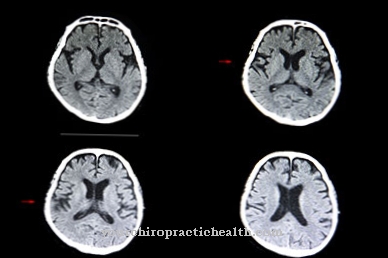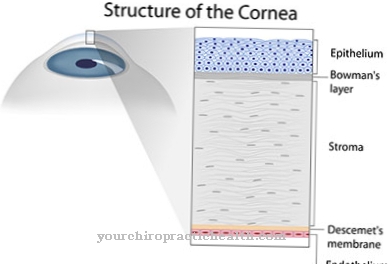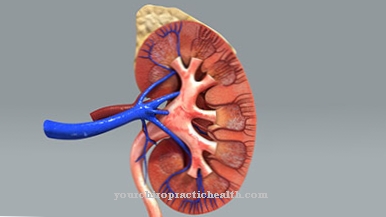In the Pyromania is a pathological psychological disorder with which the persons concerned feel a pathological (compulsive) desire to start a fire for no apparent reason. Pyromania is one of the most spectacular, but also one of the most serious mental illnesses.
What is pyromania?

© zalesky - stock.adobe.com
The phenomenon of Pyromania has not yet been fully researched and is of great interest to criminologists, neurologists, forensic scientists and psychologists. Various therapeutic approaches seek preventive measures to prevent those affected from giving in to their morbid desire to start fires. To this day there is very little scientifically and medically proven knowledge about the pathological arsonists.
causes
The clinical picture of pathological arson is an unusual and, above all, serious clinical picture. The reasons and causes that lead to this mental disorder have not yet been conclusively researched and classified. The people concerned attempt or complete arson on objects and houses without any apparently understandable motive. They are often impulsive acts out of an emotional mood.
Those affected give in to a pathological or sensual drive without a clear idea. Sometimes they are surprised by what they did themselves. The clinical picture is characterized by a pronounced fascination with all processes that have to do with fire and the subsequent fire. The pyromaniac goes through an exhilaration of affective excitement in the run-up to the arson. If the flames spread after the fire is complete, the arsonist observes his work with spellbound awe.
Not all pyromaniacs leave the scene after they have finished their work, but remain as spectators at the crime scene.Often they are even the ones who trigger the alarm signal for the police and fire brigade. During the fire, the first tension gives way to a state of relaxation, contentment, well-being and pleasure. Pyromaniacs do not see the fires they set as dangerous and punishable acts, but as a work they have created that they are proud of.
There is no feeling of guilt in the face of the destruction of someone else's property, the associated dangers and a possible fatal outcome for the people concerned.
Symptoms, ailments & signs
Pyromaniacs have no insight into their illness. Men seem to be more likely to experience this mental disorder than women. Pyromaniacs have low self-esteem, poor social skills and often live in difficult social circumstances. These characteristics can be accompanied by reduced intelligence, low empathy and learning difficulties.
Many pyromaniacs have had behavioral problems when they have children. Newspapers report regularly about pyromaniacs who work as firefighters for the local fire department. When extinguishing the fire they set themselves, they are characterized by particular activity and courageous behavior, which is then met with great recognition in the social environment. If those affected are not caught in the act quickly and live out their behavior over a long period of time, there is a risk of becoming chronic.
When fires of hatred, envy, revenge, anger, defiance, humiliation, jealousy and general dissatisfaction with the professional and private social environment are started, it is difficult for psychologists to decide when there is arson for low personal motives and when the limit is Pyromania is exceeded. With the fires they set, pyromaniacs aim to change their lives and their social environment.
You feel power over the situation and the people involved. Terrorist or politically motivated acts as well as acts of sabotage must be clearly distinguished from pyromania. Even arson, which serves to cover up the traces of criminal offenses, does not fall into the picture of this pathological disorder.
Diagnosis & course of disease
In order to find effective diagnostic and therapeutic approaches, it is first necessary to deal with the forensic (judicial-psychiatric) and scientifically proven findings. A large number of the convicted criminals belong to the age group of children and adolescents who are involved in development-related lighting and fiddling with matches.
Pyromania predominantly affects people in the first trimester of life. Most of the perpetrators have a criminal record, they are often not married, divorced or separated. Social isolation can also play a role. Much arson takes place in rural areas. Adults prefer to set their fires at night, teenagers during the day. About a fifth of pyromaniacs are mentally disabled, and forensic experts assume a personality disorder in every 10th case. The predominant motive is frustration and dissatisfaction with one's own life and the social environment.
Vengeance is seldom a motive, as the pyromaniacs are mostly unrelated to the burned victims. Although new classifications exclude the consumption of alcohol, drugs and similar intoxicants from the pathological clinical picture, alcohol plays a role in many cases. This problem particularly affects older arsonists. Rare diagnoses are dementia, delusional psychoses, depression, suicidal and sexual motives, the organic brain psychosyndrome and other personality disorders.
Complications
When pyromania is viewed as a disorder in its own right, it primarily entails complications in the form of legal difficulties. Damage to property and, in worse cases, personal injury for the pyromaniac can mean the loss of money, social status or even freedom. Similarly, pyromania can lead to some form of isolation. The more frequent fires are started, the greater the risk of having to take responsibility for them.
In addition, this impulse control disorder is very often associated with other psychological ailments, which leads to further complications. If the pathological fire-setting is a compensation mechanism (lack of self-esteem, reduced intelligence), the episodes in which the person concerned sets or plans to set a fire can increase if they are otherwise subject to emotional stress.
In cases where the setting of a fire is primarily for attention or occupation (ADHD, disorders of social behavior), there is an even greater risk of losing control. Since a fire cannot be controlled one hundred percent, there is always the risk that the pyromaniac will overestimate his abilities or underestimate the fire. This is precisely where personal injury and serious damage to property can occur.
When should you go to the doctor?
Medical treatment is always necessary with pyromania. As a rule, there is no self-healing and severe psychological complaints or even depression. Since those affected by pyromania can also harm other people, the patient should always be treated as quickly as possible.
A doctor should be consulted if the patient sets fire in different places and thereby harms other people or damages property. In addition to the urge to have to start a fire, patients usually also suffer from reduced self-esteem or from strong self-doubt. There are also difficulties in learning or social difficulties. It is not uncommon for bullying or teasing to lead to pyromania and should be discussed with a doctor if these symptoms make life difficult for the person concerned.
Pyromania should always be treated by a psychologist. Forced admission may also be necessary if the person concerned does not understand their illness.
Therapy & Treatment
Since there are currently no scientifically validated therapy options, all that remains is psychoeducation, with which affected persons are taught how to safely deal with fire and are informed about the dangers. Psychotherapy that aims to control emotions and impulses can be effective.
Self-control by keeping an emotional calendar is also a starting point. In order to achieve this motivated cooperation of the patients, however, the ability to understand the disease is a prerequisite. Further approaches are repeated fire-setting under supervision in order to induce satiety and aversion training with the aim of creating an aversion to fire.
You can find your medication here
➔ Medicines to calm down and strengthen nervesprevention
Since the course of the disease is episodic in many cases and symptom-free intervals alternate with the periods in which the pathological disorder is predominant, many pyromaniacs often pursue their passion for years undetected. Since the distinction between a pathological obsessive-compulsive disorder and other behavioral problems is difficult for laypeople in the social environment of those affected, prevention in the clinical sense is hardly possible.
Aftercare
In the follow-up care of an addiction disease such as pyromania, the reintegration of those affected into society is of great importance. Facilities that offer assisted living including self-help groups and further therapy are particularly helpful here. Those affected are confronted with everyday life again as a group, starting with professional help from specially trained addiction counselors and therapists.
After such a stay, it is advisable to provide further therapeutic support for those affected. The success of such follow-up care and the prevention of recidivism lie primarily in the motivation of the person affected. In addition, the environment, the integration into everyday life and the regaining of independence are important. The involvement in the family and the support from the circle of friends play a crucial role in the progress of recovery.
If possible, the person concerned should also pursue a regular activity such as work or a charitable task. In every city there are special contact points for addicts who provide assistance in this regard. Free time can also be enhanced by finding and pursuing a hobby. At the same time, new contacts can be made and regular appointments for such a hobby strengthen integration into everyday life.



.jpg)























